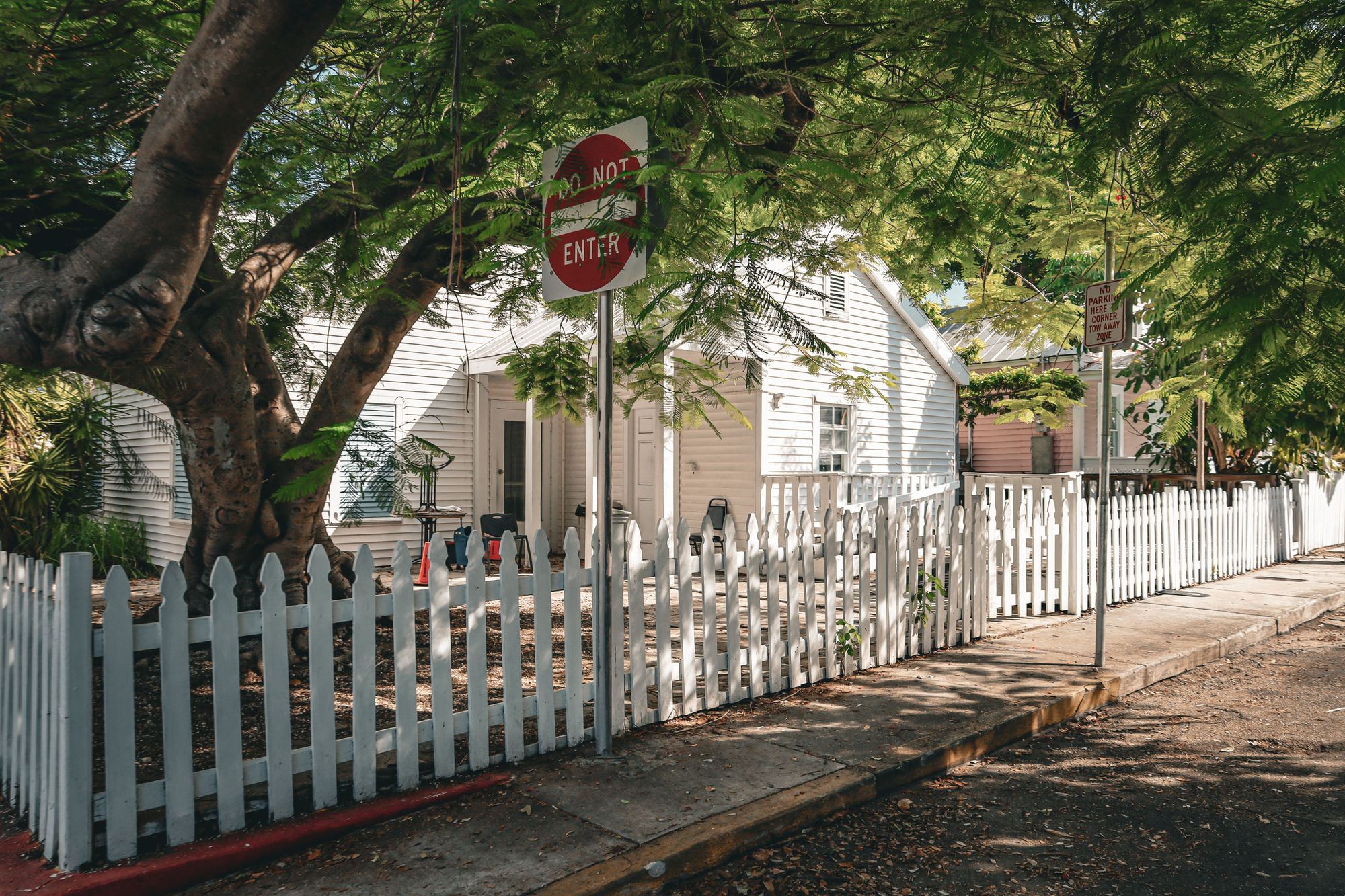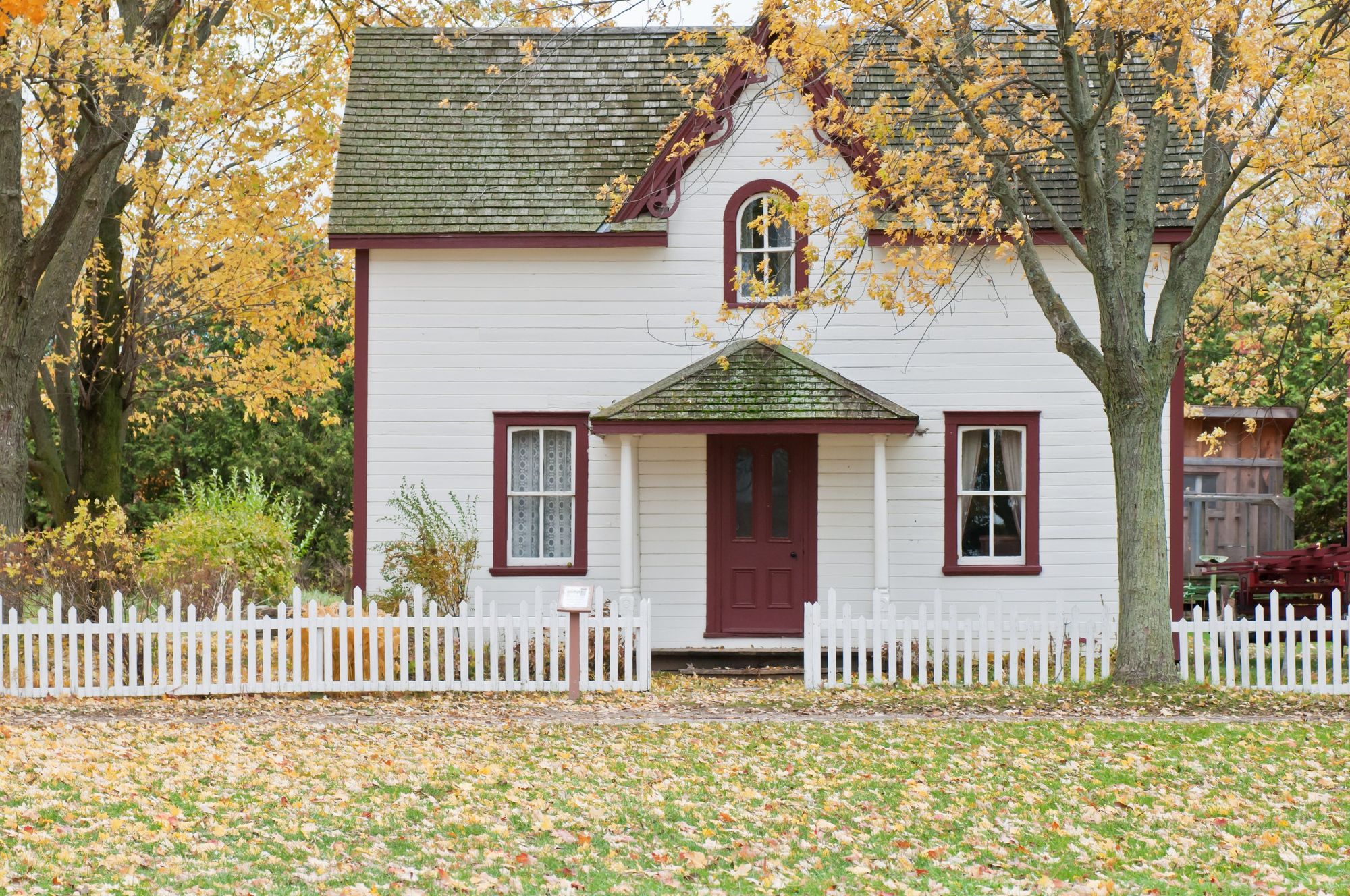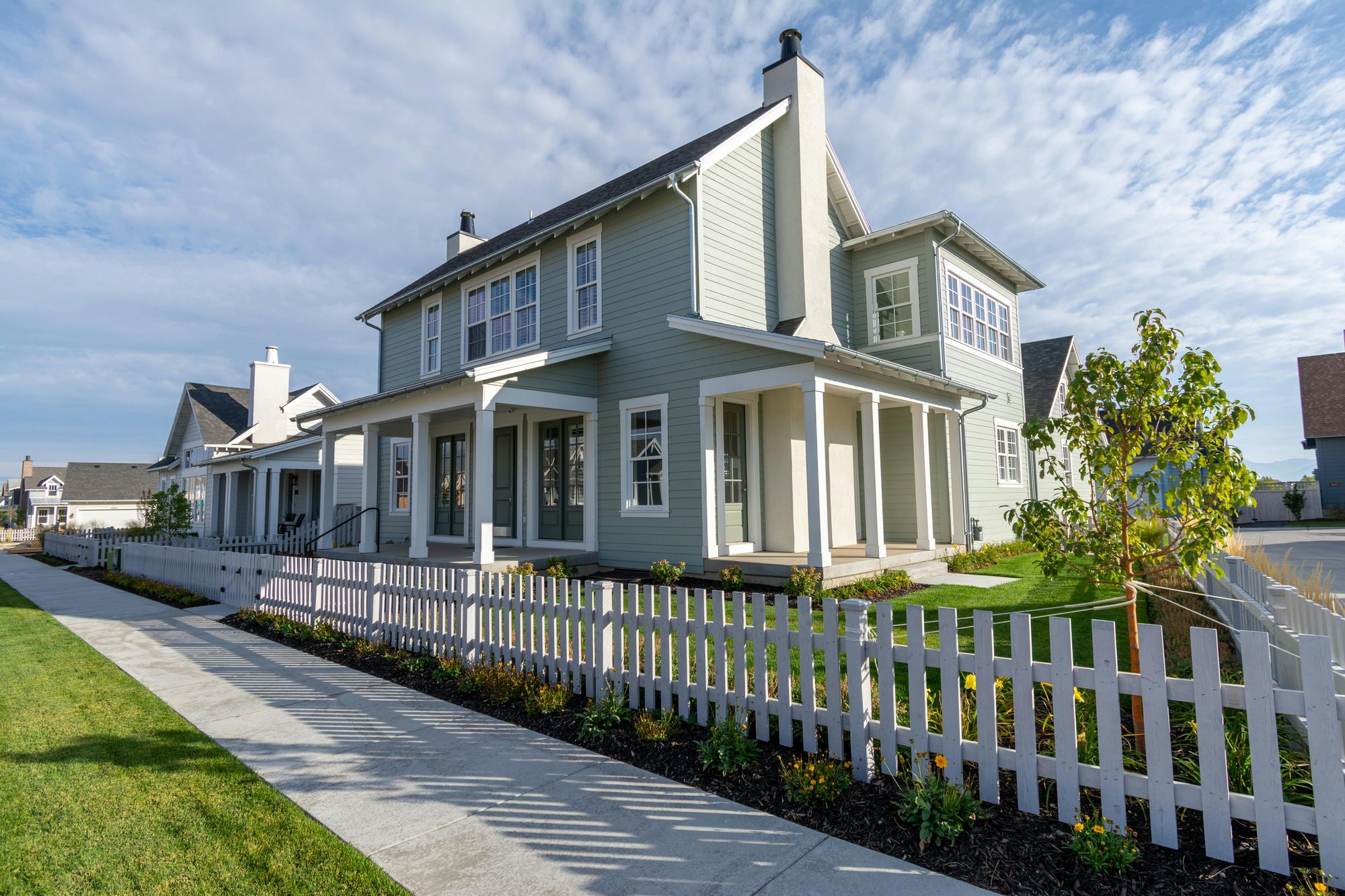Table of Content:
- Introduction
- Understanding Home Fencing Projects
- Examining Budget-Friendly Financing for Fencing
- Mastering Fencing with Affordable Financing
- DIY Home Fence Financing: A Closer Look
- Cost-Effective Fencing Solutions
- Financing Tips for Residential Fencing
- Affordable Materials for Home Fencing
- Conclusion
Key Takeaways:
- The importance of home fencing projects:
A well-executed home fencing project not only enhances the curb appeal of your property but also increases its market value. It provides privacy, safety, and can even reduce noise. - Benefits of budget-friendly financing for fencing:
Budget-friendly financing options can make your home fencing project more affordable, allowing you to spread the cost over time and minimize financial stress. - Tips on mastering fencing with affordable financing:
Explore various affordable financing options like personal loans, home equity loans, or manufacturer financing programs. Compare rates, terms, and conditions to find the best fit for your financial situation. - Insights on DIY home fence financing:
DIY fence financing can save you money on labor costs. However, it's important to factor in the time and effort needed, and ensure you have the necessary skills and tools to complete the project successfully. - Suggestions for cost-effective fencing solutions:
Opt for cost-effective fencing materials like vinyl or treated wood. Consider pre-made panels which can be less labor-intensive and more cost-effective than individual pickets. - Practical financing tips for residential fencing:
Keep a close eye on your credit score as it can influence your loan eligibility and interest rate. Always read the fine print and understand all the terms before signing a financing agreement. - Recommendations for affordable materials for home fencing:
Seek out reclaimed or recycled materials for an eco-friendly and budget-conscious option. Always compare prices from different suppliers to ensure you're getting the best deal.
I. Introduction
In the world of home improvement, fencing projects have become a popular way to enhance privacy, improve security, and add aesthetic appeal to properties. However, these projects can often come with hefty price tags, making budget-friendly financing an integral tool for homeowners looking to embark on this journey.
Budget-friendly financing options can provide the financial flexibility needed to comfortably undertake fencing projects without straining your pocket. They present an opportunity to spread the project's cost over a period of time, making it more manageable and less burdensome. This is especially important as it allows homeowners to improve their properties, boost their home's value, and enjoy the benefits of a well-installed fence without financial distress.
This article will delve deep into the realm of home fencing projects, highlighting the importance of mastering them with the aid of affordable financing. We'll explore various financing options, cost-effective fencing solutions, practical financing tips, and affordable material choices. Whether you are a DIY enthusiast or considering professional installation, this comprehensive guide will equip you with the knowledge you need to make informed decisions and successfully navigate your fencing project journey.
II. Understanding Home Fencing Projects
Home fencing projects involve the installation, replacement, or repair of fences around a residential property. These projects can range from setting up a small picket fence around your garden to erecting a tall privacy fence around the entire perimeter of your property.
The importance of home fencing projects cannot be overstated. Firstly, a fence can provide privacy, an essential aspect for many homeowners. It allows you to enjoy your outdoor space without worrying about prying eyes. Secondly, fences enhance the security of your home. They serve as a physical barrier that deters intruders, keeping your family and property safe. Additionally, fences can significantly contribute to the aesthetic appeal of your home, enhancing its curb appeal, and potentially increasing its market value.
There are several types of home fencing projects that homeowners can consider, each with its unique benefits and considerations.
- Privacy Fencing:
This is one of the most common types of fencing projects. It involves the installation of a fence, usually 6 to 8 feet tall, that blocks sightlines into your yard or home. Privacy fences can be made from a variety of materials, such as wood, vinyl, or composite. - Decorative Fencing:
These fences might not provide as much privacy or security but are designed to enhance the aesthetic appeal of your property. Examples include ornamental iron fences, picket fences, or lattice fences. - Security Fencing:
These fences are designed primarily to keep intruders out. They are usually tall, sturdy, and often feature a locked gate. Materials commonly used for security fences include metal and stone. - Boundary Fencing:
This type of fence is used to clearly mark property lines, helping to prevent disputes with neighbors. They can vary in height and material, depending on local regulations and personal preferences. - Specialty Fencing:
These include fences designed for specific purposes, such as pool fences, pet fences, or noise-reducing fences.
Choosing the right type of fence for your home depends on your specific needs, local regulations, budget, and personal aesthetic preferences. Regardless of the type, a well-planned and executed home fencing project can provide numerous benefits for homeowners.

III. Examining Budget-Friendly Financing for Fencing
Budget-friendly financing refers to a range of financial options that allow individuals to fund a particular project, such as a home fencing project, without straining their budget. These financing options are designed to make large purchases more manageable by spreading the cost over a set period, often with the addition of interest.
In the context of home fencing projects, budget-friendly financing is incredibly important. Fencing projects can be comprehensive and, depending on the materials used and the size of the property, potentially quite expensive. Budget-friendly financing allows homeowners to undertake these projects without the need for a large sum of money upfront. This means that homeowners can enhance their property's security, privacy, and aesthetic appeal without worrying about immediate financial implications.
To access budget-friendly financing, homeowners have several options:
- Personal Loans:
A personal loan can be used for any purpose, including a home fencing project. Banks, credit unions, and online lenders offer these loans, usually with fixed interest rates and a predetermined repayment period. - Home Equity Loans or Home Equity Lines of Credit (HELOC):
If you have sufficient equity in your home, you can borrow against it to finance your fencing project. These options typically offer lower interest rates than personal loans but do come with the risk of losing your home if you fail to repay the loan. - Credit Cards:
Some credit cards offer 0% APR for a certain period, which can be a good option if you are confident you can pay off the balance before the promotional period ends. - Manufacturer Financing:
Some fencing companies or home improvement stores offer financing options. These may include deferred interest plans or installment plans. - Government Loans:
Certain government programs provide loans for home improvement projects. These typically come with favorable terms and can be a good option for eligible homeowners.
In conclusion, budget-friendly financing can play a crucial role in making your home fencing project a reality. By exploring these options, you can find a financing plan that fits your budget and meets your needs.
IV. Mastering Fencing with Affordable Financing
Mastering fencing with affordable financing involves a strategic approach that combines selecting the right fencing project with the right financing option. Here are some tips and strategies to achieve this:
- Planning and Budgeting
Before starting your fencing project, plan and budget effectively. Determine the type of fence you need, the materials required, and get a quote for the project. This will give you an idea of how much financing you need. - Compare Financing Options
Investigate and compare different financing options to find one that suits your financial situation. Look at interest rates, repayment periods, and any penalties for early repayment. - Improve Your Credit Score
If you intend to apply for a loan, ensure your credit score is in good shape. A higher credit score will qualify you for better interest rates. - Negotiate
Don’t be afraid to negotiate the terms of your loan or the cost of your fencing project. You might be able to secure a lower interest rate or a discount on your project. - Use Savings Where Possible
If you have some savings set aside, consider using them to reduce the amount you need to borrow. This can help you save on interest payments.

Real-life Examples
- Case Study 1
John and Sarah wanted to install a privacy fence around their property. After getting a quote for $5,000, they decided to use a home equity line of credit (HELOC) to finance the project. They chose this option because they had enough equity in their home and the interest rate was lower than a personal loan. By paying off the loan within the agreed period, John and Sarah were able to install their desired fence without straining their budget. - Case Study 2
Emily, a single homeowner, decided to install a pet fence in her backyard. The project was estimated to cost $2,000. With a good credit score, Emily qualified for a 0% APR credit card with a 12-month promotional period. She used the credit card to finance the fencing project and managed to pay off the balance within the promotional period, effectively financing her project interest-free.
These examples demonstrate that with careful planning and smart financial decisions, homeowners can successfully execute fencing projects without breaking the bank. It's about finding a balance between achieving your fencing goals and staying within your financial means.
V. DIY Home Fence Financing: A Closer Look
DIY home fence financing involves homeowners taking on the responsibility of planning, budgeting, and sourcing funds for their fencing project, rather than outsourcing these tasks to a professional or a contractor. This approach might involve taking out a personal loan, using a credit card, or saving up over time to fund the project.
The benefits of DIY fence financing include:
- Cost Savings
Managing the financing process yourself can potentially save you money. You might avoid professional fees and have more control over where you source materials and how much you spend. - Control
DIY financing gives you complete control over your budget, allowing you to adjust your plans according to your financial situation. - Flexibility
You can choose the financing option that best suits your needs, whether it's a loan, credit card, or savings.
However, DIY fence financing also has its challenges:
- Time-Consuming
DIY financing requires time and effort to research and compare financing options, negotiate with lenders, and manage the budget. - Risk
If you are not familiar with finance, you may risk choosing an option that isn't the most cost-effective or suitable for your circumstances.
To successfully navigate DIY fence financing, consider the following steps:
- Research
Understand the different financing options available and how they work. Consider interest rates, repayment terms, and any potential penalties. - Plan
Create a detailed plan for your project, including the type of fence, materials, and estimated costs. This will help you determine how much you need to finance. - Budget
Work out a realistic budget that accounts for all costs, including unexpected or additional expenses. This can help ensure you don't overextend financially. - Seek Advice
Don't hesitate to seek advice from financial advisors or people who have completed similar projects. They can provide valuable insights to help you make informed decisions.
DIY home fence financing can be a rewarding experience if managed correctly, offering homeowners the chance to take control of their project from start to finish.

VI. Cost-Effective Fencing Solutions
Cost-effective fencing solutions refer to strategies employed to build or upgrade a fence without incurring unnecessary expenses. These strategies aim to strike a balance between quality, durability, aesthetics, and cost.
The benefits of cost-effective fencing solutions are numerous:
- Financial Savings
These solutions allow homeowners to save money without compromising on the quality or effectiveness of their fence. - Enhanced Property Value
A well-constructed, aesthetically pleasing fence can enhance a property's value. - Functional and Durable
Cost-effective doesn't mean cheap. Properly chosen cost-effective solutions can result in a fence that serves its purpose and stands the test of time.
The importance of cost-effective fencing solutions lies in their ability to make home improvement projects feasible for a wider range of budgets, empowering more homeowners to increase their property's security, privacy, and curb appeal.
Practical examples of cost-effective fencing solutions include:
- Vinyl Fencing
Vinyl fences are durable, low maintenance, and relatively inexpensive. They come in a variety of styles and colors, providing an economical alternative to more expensive materials like wood or iron. - Chain-Link Fencing
Chain-link fences are one of the most cost-effective solutions available. They are durable, easy to install, and provide excellent security. - Bamboo Fencing
Bamboo is a cost-effective, eco-friendly solution. It offers a unique aesthetic and is ideal for creating privacy. - DIY Installation
If you have the skills and time, installing the fence yourself can save on labor costs. - Recycled Materials
Using recycled or reclaimed materials can create a unique, cost-effective fence. However, ensure these materials are safe and structurally sound. - Combination Fencing
This involves using a more expensive material for the fence's visible parts and a less expensive one for the less visible areas.
By employing these cost-effective fencing solutions, homeowners can enhance their properties without straining their budgets.
VII. Financing Tips for Residential Fencing
Financing a residential fencing project can be a significant undertaking. However, with careful planning and a few strategic moves, you can manage your costs effectively. Here are some helpful financing tips:
- Budget Wisely
Calculate the estimated cost for your fencing project including materials, labor, and any unexpected expenses. This will enable you to plan your finances better. - Compare Quotes
Reach out to multiple contractors for quotes and compare them to get the best value for your money. - Negotiate
Don't hesitate to negotiate the cost with your contractor. You might be able to secure a better deal. - Choose Affordable Materials
Opt for cost-effective materials that offer durability and aesthetic appeal, like vinyl or chain-link. - Consider DIY
If you have the skills, doing the installation yourself can save on labor costs. - Explore Financing Options
Evaluate different financing options such as home equity loans, personal loans, or credit cards to find the most cost-effective choice. - Maintain a Good Credit Score
A good credit score can help you secure loans at lower interest rates, saving you money in the long run.
The importance of these tips lies in their potential to significantly reduce the financial burden of installing a residential fence. Each tip provides a way to either lower the upfront costs or spread them out over time in a manageable way.
By following these tips, homeowners can save money in several ways. Negotiating and comparing quotes can reduce the initial cost. Choosing affordable materials and considering DIY can cut down on materials and labor expenses. Exploring different financing options and maintaining a good credit score can lower the cost of borrowing. In these ways, these tips can make residential fencing projects more financially accessible.

VIII. Affordable Materials for Home Fencing
Home fencing can be a costly project, but choosing the right materials can make it more affordable. Here are some budget-friendly materials for home fencing:
- Vinyl
Vinyl fencing is durable, easy to maintain, and available in various styles. It's an economical alternative to pricier materials. - Chain-Link
Chain-link fences are among the least expensive fencing options. They are durable, easy to install, and provide excellent security. - Wood
While certain types of wood can be expensive, options like pine and cedar are relatively affordable and offer a classic look. - Bamboo
Bamboo fences are cost-effective and eco-friendly, providing a unique aesthetic and good privacy. - Metal
Certain types of metal, like aluminum, can be a cost-effective choice, offering durability and a sleek, modern look.
These materials can be found at local home improvement stores or online retailers. Some stores may offer discounts for bulk purchases. Additionally, consider checking classified ads or online marketplaces for secondhand materials.
Choosing affordable materials for home fencing can significantly help in budget management. These materials lower the overall cost of the project, allowing homeowners to allocate funds to other aspects, such as installation or additional home improvement projects. Furthermore, many of these materials are durable and require little maintenance, resulting in cost savings over time. Always remember, affordable doesn't necessarily mean low quality. With proper research and planning, you can find cost-effective materials that meet your fencing needs without breaking the bank.
IX. Conclusion
In conclusion, embarking on a home fencing project doesn't have to be a financial strain. With a careful approach to budgeting, diligent comparison of contractor quotes, smart negotiation, and a thoughtful selection of affordable, durable materials, homeowners can effectively manage their fencing project costs. Additionally, considering DIY installation and exploring various financing options can further ease the financial burden.
The key to mastering home fencing projects lies in planning and research. Understand your needs, explore your options, and make informed decisions. Whether it's the choice of material or the method of financing, every decision should offer value for your money and align with your budget.
As you embark on your fencing project, consider SimpleDirect to meet your financing needs. SimpleDirect offers an array of financing solutions tailored to fit your budget and circumstances. With competitive interest rates, flexible repayment terms, and a user-friendly application process, SimpleDirect aims to make your home improvement projects more financially accessible.
SimpleDirect understands that home improvement is not just about enhancing your property's aesthetic appeal or functionality, but also about improving your quality of life. That's why we strive to provide financing solutions that are as stress-free as possible.
Take the first step towards your dream fence today. Explore SimpleDirect's financing options and find a solution that works best for you. Remember, a cost-effective fence doesn't mean compromising on quality or design. With the right choices, you can have a fence that is both budget-friendly and a valuable addition to your property.






